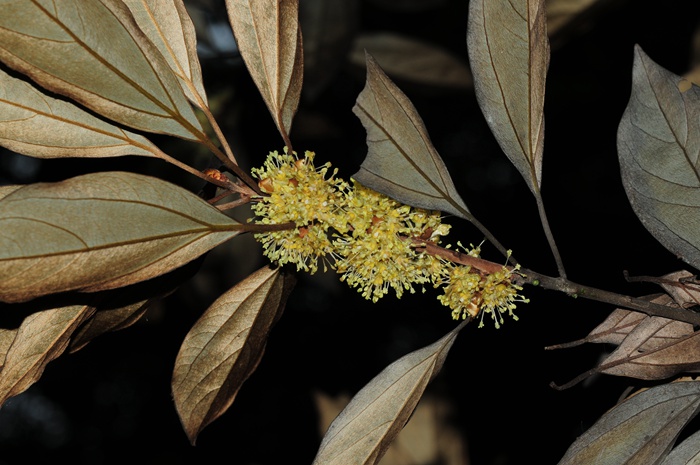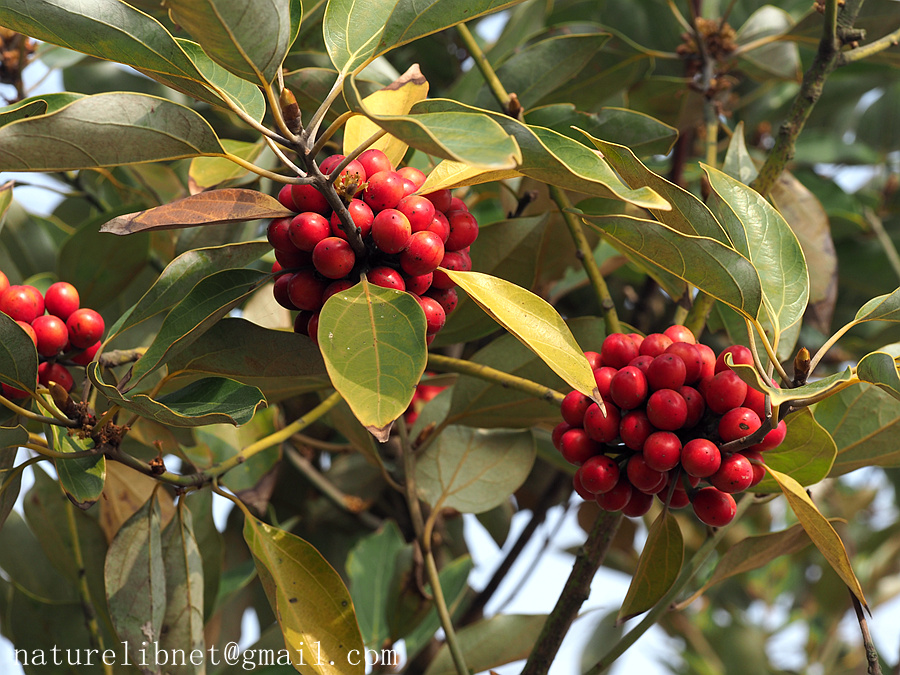- Scientific Name: Neolitsea sericea (Blume) Koidz.
- Ref: Bot. Mag. (Tokyo) 40:343. 1926
- Synonyms:
- Camphora glauca G.Don
- Cinnamomum glaucum J.Presl
- Laurus sericea Blume
- Litsea sieboldii Tanaka
- Malapoenna sieboldii Kuntze
- Neolitsea cuneifolia Koidz.
- N. ohbana Koidz.
- N. sieboldii (Kuntze) Nakai
- Tetradenia cuneifolia (Koidz.) Makino & Nemoto
- T. ohbana (Koidz.) Makino & Nemoto
- English Common Name: Japanese silver tree
- Chinese Common Name: 舟山新木姜子 Zhōushān xīn∙mùjiāngzǐ, 男刁樟 nándiāo∙zhāng
- Japanese Common Name: シロダモ [白梻/白だも] shirodamo
- Family: Lauraceae
- Genus: Neolitsea
- Distribution: Forests on mountain slopes. Taiwan, Zhejiang [Japan, Korea].
- Photo: 11/10/2012
Trees up to 10 m tall. Young branchlets and petioles with dense golden yellow sericeous pubescence and becoming glabrous. Leaves alternate; petiole 2-3 cm; leaf blade elliptic to lanceolate-elliptic, 6.6-20 × 2-4.5 cm, with dense golden yellow sericeous hairs on both surfaces when young and becoming glabrous, shiny adaxially, glaucous abaxially with yellow-brown or orange-brown appressed sericeous hairs, triplinerved, lateral veins 4 or 5 pairs, lowermost pair arising 6-10 mm from base, with 4-6 curved thin veinlets at one side near margin, apex shortly acuminate, acumen obtuse. Umbels axillary or lateral, sessile, clustered, 5-flowered. Pedicel 3-6 mm, densely villous. Perianth segments 4, elliptic. Male flowers: fertile stamens 6; filaments villous at base, of 3rd whorls each with 2 stipitate reniform glands at base; rudimentary pistil glabrous. Fruit globose, ca. 1.3 cm in diam., seated on shallowly discoid perianth tube. Fl. Sep-Oct, fr. Jan-Feb. (Flora of China)


